Taiwanese manufacturer Playnitride stunned visitors by exhibiting Micro LED displays. There are three color displays, white, green and full color. In addition, 0.89” display is used on watches, with about 169 ppi and blue LED chip in combination with phosphor. For 0.8” display, the display quality is improved to 230 ppi, with green LED chip. For full color 0.89” display, it adopts RGB LED chip combination, with about 103 ppi. Playnitride hopes to advance technology in the future to develop toward the commercialization of Micro LED display.
In terms of Jasper Display, it exhibited the silicon-based backplane Micro LED display. Currently, 0.7” display can reach 4K resolution. Although with monochrome display, the smallest pixel size can achieve the high display effect of 3.74 μm.
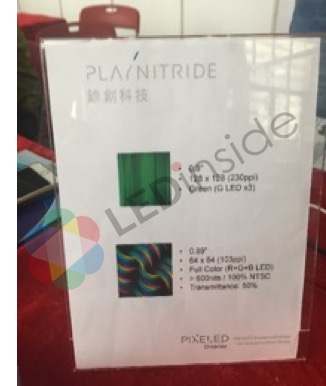
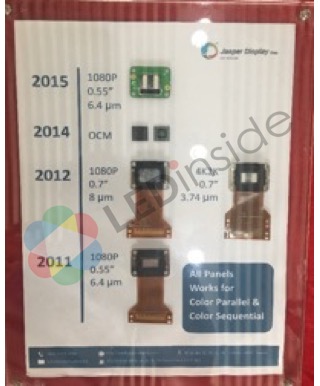
François Templier, from Leti, mentioned that there are high requirements such as high resolution and small display area for wearable displays, including AR and VR, for Micro LED applications; thus, LED chip size and LED pitch will be more miniaturized. The maximum limit of traditional flip chip bumping is about 15 μm. If produce Micro tube on GaN array, when substrate bonding, Micro tube will be directly inserted into the corresponding pad. Thus, the application of Micro tube will shorten LED bonding pitch. Leti has applied this technology to monochrome display, with 10 µm pixel pitch and 873 x 500 pixels.
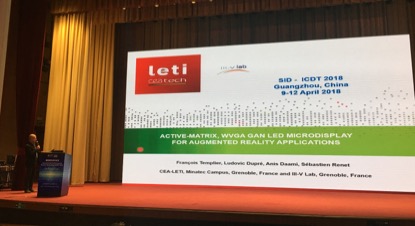
Professor Kei May Lau stated that as LED chip becomes smaller in the future, besides transfer technology, the producing quality of Micro LED chip has to be stabilized in order to increase capacity and reduce production cost. For circuit design, mature integrated circuit design will be focused to find the most appropriate solution.
Currently, for the Micro display developed by Professor Kei May Lau, it can reach 0.19”, with 1700 ppi and monochrome display solution. With LED miniaturization, the application of quantum dot will be necessary. Therefore, the team of Professor Kei May Lau also adopted quantum dot technology to achieve full color. Currently, RGB quantum dots are coated with Micro display through inkjet printing. The display is about 3.6mm(L) x 3.6mm(W). The resolution is 40 x 40 pixels.
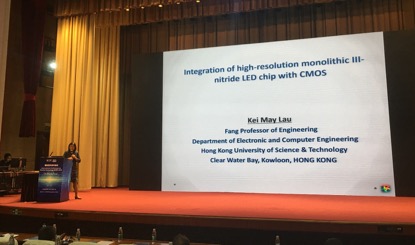
Xu Chenke, Vice President of San'an Optoelectronics, indicated that compared with other display methods such as LCD, LCOS, DLP and OLED, Micro LED has higher evaluation. In addition, in terms of OLED display application, Micro LED performs better in brightness and reliability. Besides, it can combine soft substrate to reach flexibility. Thus, San'an Optoelectronics keeps a positive attitude developing Micro LED. Currently, San'an Optoelectronics can produce full color Micro LED display. The EQEs of RGB chip are expected to be 18%, 30% and 60%. They will continue to increase in the future. What's more, Xu Chenke said that San'an Optoelectronics can provide solutions such as chip transferring and bonding according to clients’ demand, with technical service like horizontal or vertical electrode LED chip. The chip size of horizontal electrode is about 30-100 μm, and vertical electrode LED chip can reach 10-100 μm.
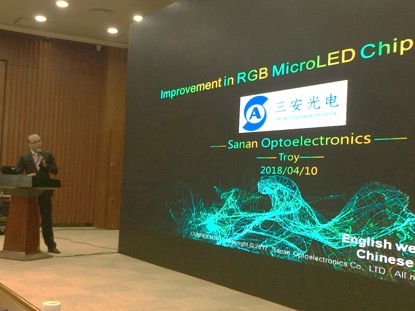
Professor Xuyong Yang, from Shanghai University, stated that the development of QD application in LED is limited to price and lifespan currently. The material price of QD isn’t cheap. Thus, the related applications are easy to pass onto consumers. For lifespan, it lies in 100-1000 hours. Thus, Professor Xuyong Yang tried to add metal oxide film in QD to rise the stability and lifespan. After the improvement, it can reach 16000 hours (at 100 nits) during the test, which will boost QD application in LED in the future.

Article written by Max / LEDinside





 CN
TW
EN
CN
TW
EN











